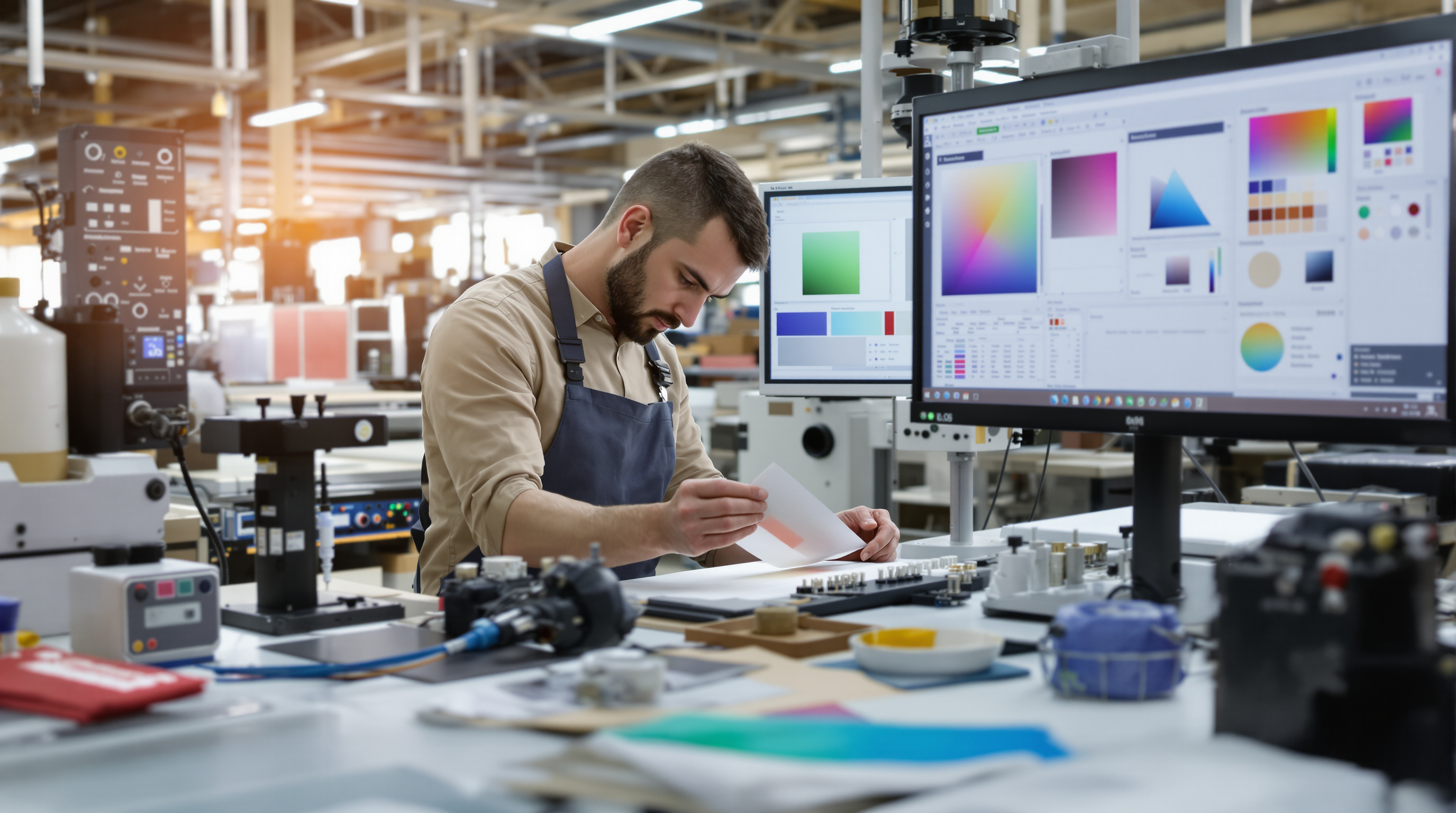The Art and Science of Production Excellence
T.K. Broecker / 12 October 2025

Balancing Workflow Efficiency and Quality in Modern Production
In today's competitive market, mastering the delicate balance between workflow efficiency and unwavering quality has become essential for businesses across industries. The journey from concept to finished product involves a sophisticated interplay of precision, craftsmanship, and technical expertise. This article explores how meticulous attention to color management, calibration, proofing, production methods, finishing techniques, and quality control creates products that truly stand out in an increasingly demanding marketplace.
The Foundation of Excellence: Workflow Optimization
At the core of any successful production system lies a well-designed workflow. Workflow optimization represents the systematic arrangement of tasks, procedures, and resources to maximize efficiency while maintaining quality standards. When properly implemented, an optimized workflow serves as the backbone for consistent excellence.
The concept of workflow has evolved significantly since its origins in manufacturing during the Industrial Revolution. Modern workflow management incorporates:
- Process mapping: Identifying every step in the production journey and establishing clear responsibilities.
- Critical path analysis: Determining which processes directly impact delivery timelines.
- Automation integration: Implementing technological solutions to reduce human error and increase consistency.
- Feedback loops: Creating mechanisms for continuous improvement based on outcomes.
Research from the Project Management Institute indicates that organizations with standardized practices waste 28 times less money due to improved workflow efficiency. This demonstrates how workflow optimization directly impacts both quality outcomes and financial performance.
Precision and Craftsmanship: The Human Element
While technological advances continue to transform production environments, the human elements of precision and craftsmanship remain irreplaceable. These qualities represent the intersection of technical knowledge, practiced skill, and artistic sensibility.
Precision in production refers to the exactitude with which specifications are followed and tolerances are maintained. It requires:
- Meticulous attention to measurements and dimensions
- Consistency across production runs
- Adherence to established standards and specifications
Craftsmanship, meanwhile, embodies the artistic and intuitive aspects of creation. Traditional craftsmanship originated in guild systems where master artisans passed knowledge to apprentices through years of guided practice. This heritage continues in modern production through:
- Specialized manual techniques that machines cannot replicate
- Judgment calls based on experience and trained perception
- Creative problem-solving when unexpected challenges arise
The marriage of precision and craftsmanship creates products with soul—items that meet technical specifications while carrying the subtle hallmarks of human care and attention.
The Science of Color: Management, Calibration, and Proofing
Color management is a systematic approach to ensuring color accuracy across different devices and materials. This process has become increasingly critical as production chains grow more complex and globally distributed.
The International Color Consortium (ICC) established standards for color management that include:
- Device profiles: Mathematical descriptions of how specific equipment reproduces color.
- Color spaces: Defined ranges of reproducible colors (such as sRGB, Adobe RGB, and CMYK).
- Profile connection spaces: Standardized reference points for translating between device-specific color interpretations.
Calibration represents the technical foundation of color management. This process involves adjusting equipment to known standards using specialized tools like spectrophotometers and colorimeters. Regular calibration ensures that:
- Monitors display colors accurately
- Printers consistently reproduce intended colors
- Cameras capture color information reliably
The final step in color quality assurance is proofing—creating representative samples that predict how the final product will appear. Proofing methodologies include:
- Soft proofing: Using calibrated displays to simulate final output.
- Contract proofs: Physical representations that serve as binding agreements for expected results.
- Press proofs: Samples produced on actual production equipment.
Together, these scientific approaches to color ensure that the creative vision remains intact throughout the production process, ultimately delivering consistent results that meet client expectations. For a deeper exploration into how color accuracy and production quality intersect, see The Art and Science of Production Excellence.
From Production to Perfection: Finishing and Quality Control
The production phase transforms raw materials into finished goods through systematic processing. Whether manufacturing physical products or creating digital assets, this stage represents the actualization of planning and preparation. Achieving professional photo printing standards requires:
- Adherence to established workflows and procedures
- Consistent application of technical standards
- Efficient resource utilization
- Adaptability to address unexpected variables
However, truly exceptional products distinguish themselves through finishing details. These final touches often determine whether a product merely meets specifications or exceeds expectations. Common finishing considerations include:
- Surface treatments: Textures, coatings, and tactile elements that enhance user experience.
- Edge work: The treatment of boundaries and transitions between components.
- Assembly precision: The exactitude with which components come together.
- Packaging integration: How the product presentation complements its function.
Throughout production and finishing, quality control measures ensure consistency and excellence. Effective quality control systems include:
- Statistical process control – using data analysis to identify variations before they become problems.
- Inspection protocols – systematic examination of products at critical stages.
- Defect categorization – standardized approaches to identifying and addressing imperfections.
- Performance testing – verification that products function as intended under various conditions.
When effectively implemented, these elements create a holistic system where quality isn't just inspected at the end—it’s built into every stage of the production journey.
Conclusion
The pursuit of excellence in production environments requires both technical precision and creative vision. By implementing optimized workflows, honoring the human elements of precision and craftsmanship, applying scientific approaches to color management, and paying meticulous attention to production and finishing details, organizations can consistently deliver exceptional quality.
To learn more about our photo printing services or discuss a custom project, contact our team today.